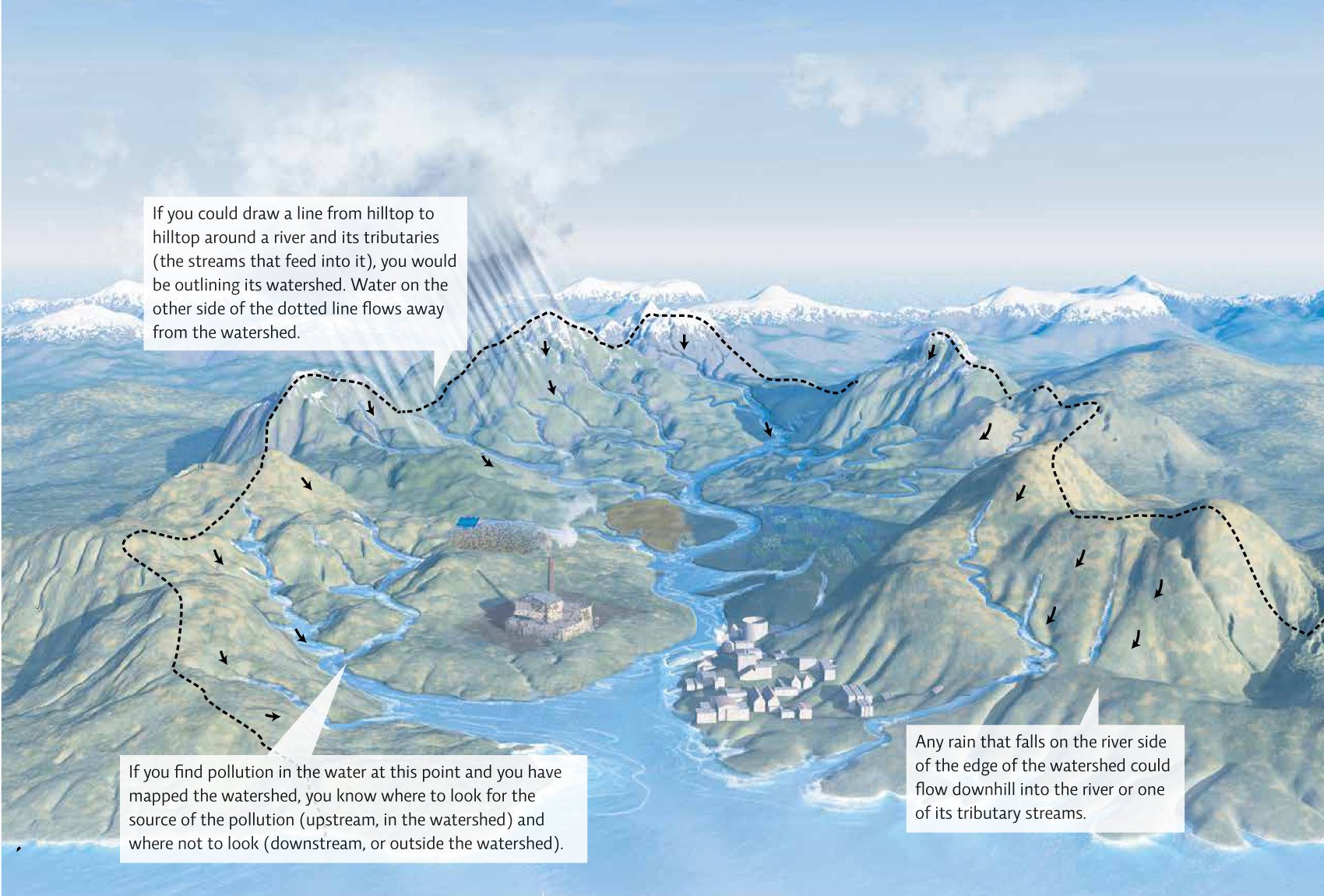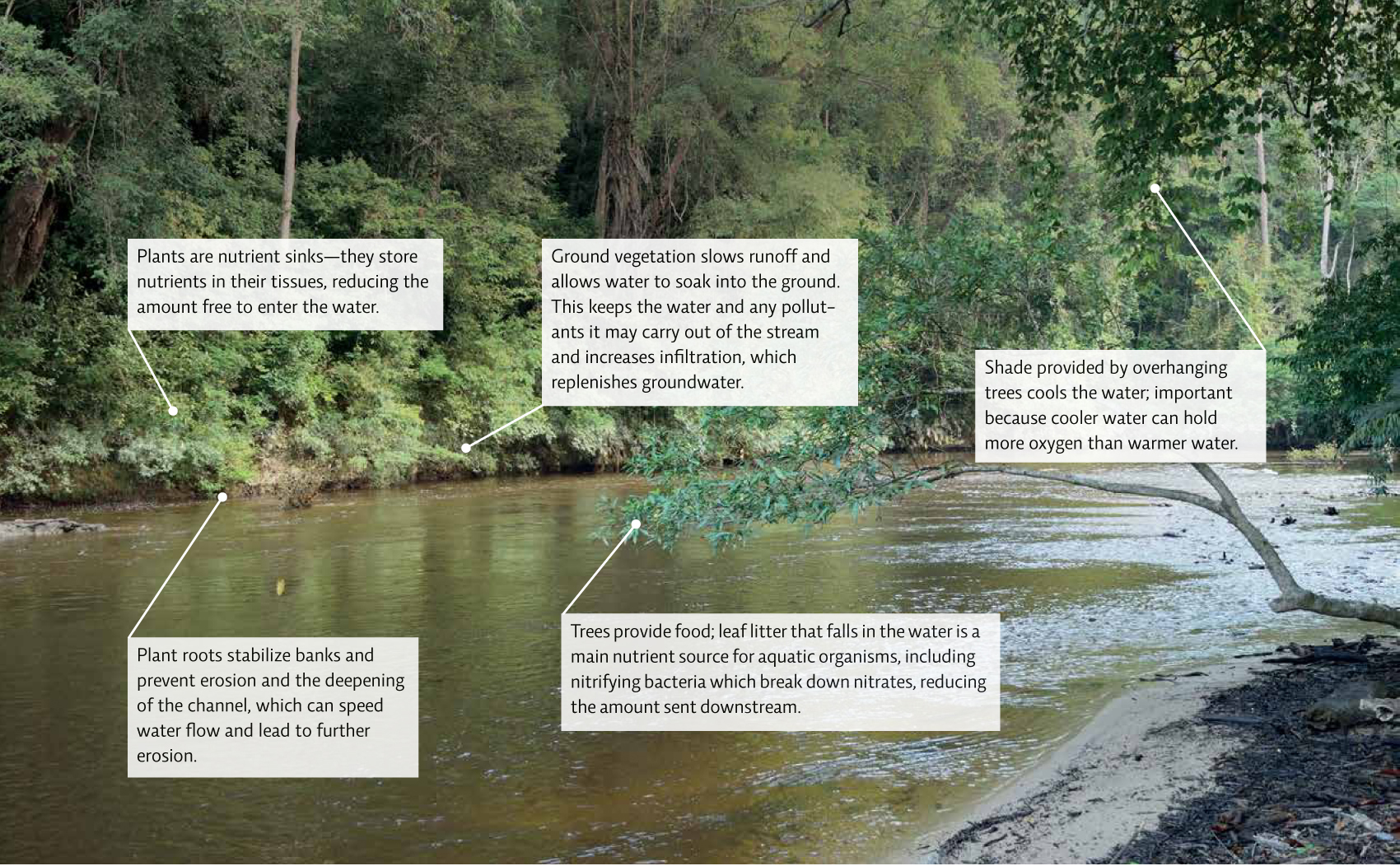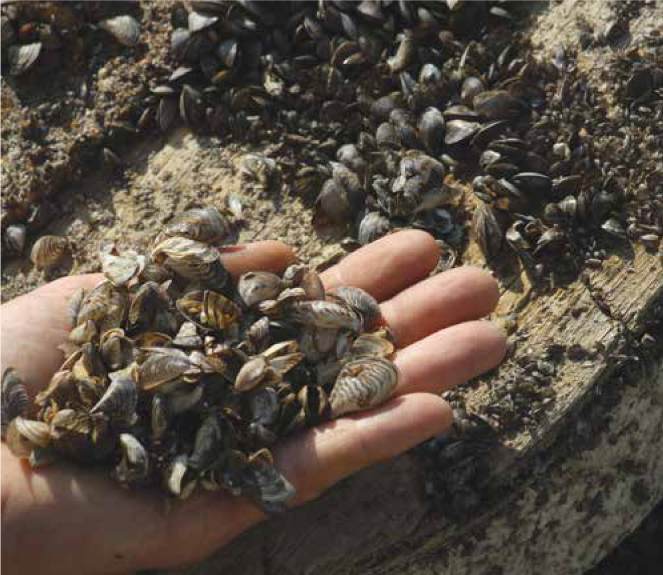16.5 Identifying the types and sources of the pollution is the first step to cleaning up our water.
Some additional sources of pollution were creeping into Lake Erie’s watershed—the area of land from which rain and other sources of water drain into the lake or its tributaries. Pinpointing those sources was not an easy task. Lake Erie is the shallowest of the Great Lakes, but still one of the largest freshwater bodies in the world in terms of surface area. Its watershed covers more than 78 000 square kilometres and is home to a lot of activity: dense population (approximately 12 million residents), extensive agriculture, and many industries. To make things even more complicated, the lake is bordered by one province (Ontario) and four states (New York, Pennsylvania, Ohio, and Michigan). [infographic 16.3]

The resurgence of algal blooms in Lake Erie was not just reminiscent of earlier times—in some recent years they have been worse. The 2012 bloom was looking like a repeat of the previous year’s record bloom. Research led by Anna M. Michalak of the Carnegie Institution for Science’s Department of Global Ecology concluded that the 2011 bloom was the result of a “perfect storm” of conditions—a moderate autumn allowed time to apply fertilizer and prepare the ground for the next season, a very rainy spring and summer delivered the fertilizer to the lake, and a summer with less wind than normal prevented the nutrients from being dispersed—all of which conspired to fuel the record algal bloom.
Watershed topography (flatness or steepness), natural land cover type, and how humans use the land (as parks or parking lots) influences whether pollution makes its way into surface waters. Ideally, the land near the water’s edge (the riparian area) should have abundant plant life. Well-vegetated riparian areas stabilize banks, which reduces sediment pollution. In addition, undergrowth and deep rooted plants slow the flow of runoff which helps keep pollution out of surface waters and also increases groundwater supplies. The farther water has to trickle down the soil to reach groundwater the more infiltration acts as a filter, purifying the water. [infographic 16.4]

The soil filtration system does not always work perfectly. In 2000, thousands of people fell ill in Walkerton, Ontario, when a deadly strain of Escherischia coli contaminated one of the wells providing water to some residents. Unfortunately, E. coli and other pathogens such as Salmonella can enter water sources from untreated sewage or animal waste. In Walkerton, heavy spring rains carried runoff with contaminated manure into a well, entering the groundwater. The incident—which claimed the lives of 7 people—was aggravated by administrative missteps, such as failure to sufficiently chlorinate the water and to warn residents of the contamination. (For more on freshwater resources, see Chapter 15.)
Clearly, healthy, well-vegetated watersheds serve many important functions within an ecosystem—they purify groundwater, prevent floods and major erosion, and protect nearby bodies of water. Any problem in the Lake Erie watershed could affect the lake, so officials from every shoreline have to work together to determine the cause of the latest problems. “There’s no point in half the watershed doing something [to prevent pollution] if the other half continues” polluting the water, says Watson.
And even when wastewater is treated before being released into water bodies, it can contain the remnants of many medications we humans excrete in our waste. This treated wastewater from residential areas, such as the busy communities lining Lake Erie, contains enough drug residues to affect aquatic life. Some of these substances are endocrine disruptors, altering fish and amphibian reproduction. Downstream from wastewater treatment plants in Alberta, a research team led by Ken Jeffries has identified fish populations that are predominately female, and that have some male fish exhibiting female traits, likely a result of exposure to synthetic estrogens and other contaminants.
In this second round of pollution in Lake Erie, researchers soon realized they were also dealing with an entirely new complication that was indirectly spurring the growth of algae: an invasive species. In 1988, a transatlantic freighter carrying ballast water from another region—a technique meant to balance a boat in the absence of cargo—entered into the Great Lakes system. The water contained some tiny Russian hitchhikers: zebra mussels. Once the vessel picked up new cargo, it dumped the water in Lake St. Clair, which feeds into Lake Erie. Zebra mussels are hardy creatures that breed prolifically; each female can produce 1 million eggs in a year. Young mussels are barely wider than a human hair, and can drift for kilometres before attaching onto a stationary object, such as rocks, docks, and piers; they also attach to boats or trailers, which carry them even farther. Within 10 years, they had spread to all five of the Great Lakes. “If you look at a map of North America, they’re everywhere—even British Columbia,” says Shear. “They’ve colonized just about every available habitat there is.”
288

In some areas of Lake Erie, you could find 1 million mussels per square metre. Shells make beaches unusable; they even blocked a Michigan town’s water supply when they clogged a major pipeline. Zebra mussels aren’t the only invasive species problem, either. More than 140 non-native species have become established in the Great Lakes since the 1800s, a form of biological pollution. Other new, noxious neighbours include the round goby, a small fish that outcompetes native fish and eats the eggs of lake trout, and quagga mussels, which are similar to zebra mussels.
289
How could the introduction of zebra mussels kill fish and trigger algal blooms? Invasive zebra mussels can actually help remove excess nutrients or toxins since they are filter feeders, but they disrupt the entire community and outcompete some native species for food or habitat. Each mussel can filter up to 4 litres of water per day, including suspended sediments and algae, but they then excrete excess phosphorus back into the water. Water clarity increases—from 15 centimetres to 9 metres in some parts of Lake Erie—but that allows sunlight to penetrate further, fuelling an explosive growth of algae, potentially causing hypoxia.
So what can be done? Unfortunately, once zebra mussels and other invasive species have taken root, they can be very difficult (if not impossible) to eradicate. Some researchers are investigating forms of biological control, in which they release a predator of zebra mussels into the water, but Lake Erie is so large, and zebra mussels reproduce so rapidly, that no predators have kept pace. Ultimately, the most effective solution is to try to prevent more invasive species from entering and spreading—by, for instance, removing vegetation and attached mussels from boats, and thoroughly cleaning scuba gear before using it to enter new waters.